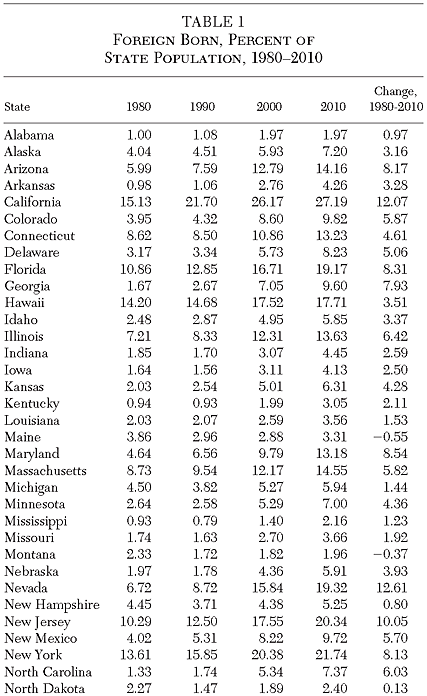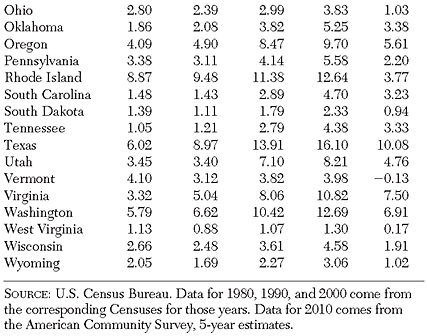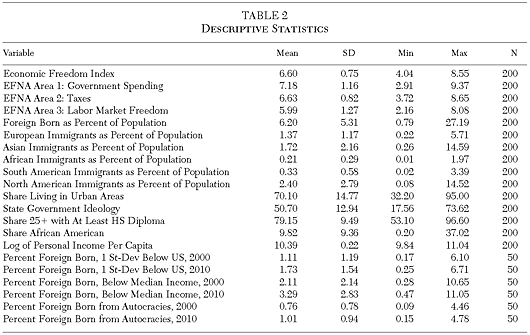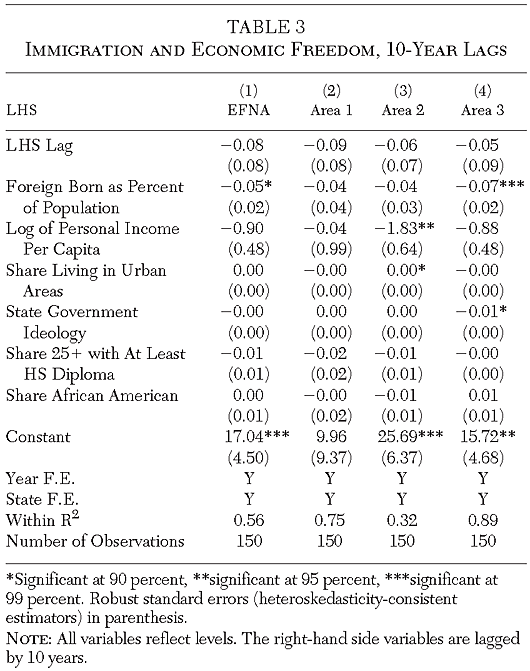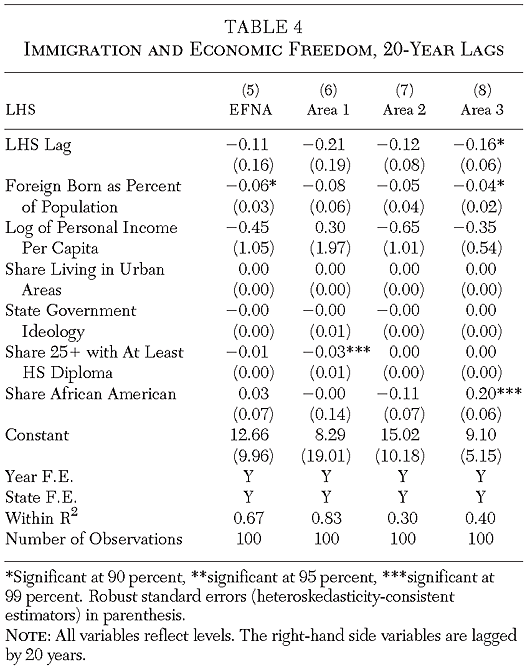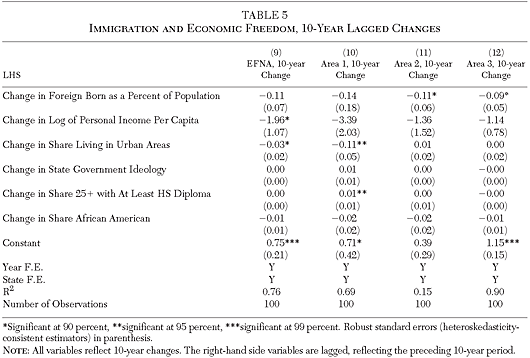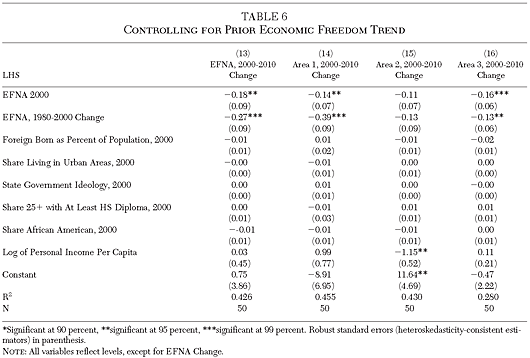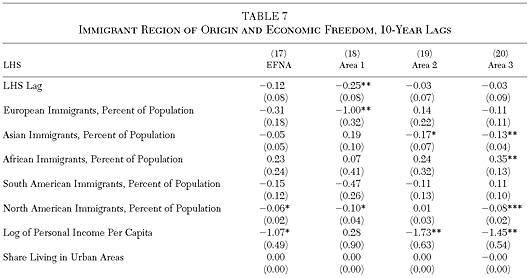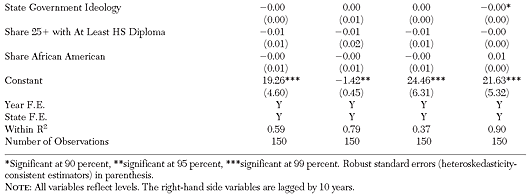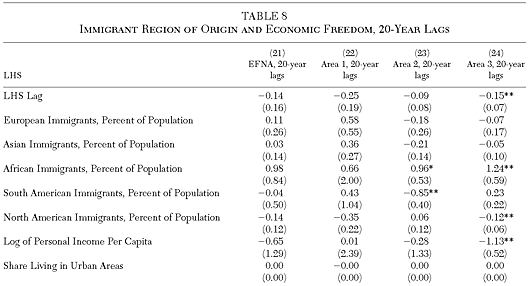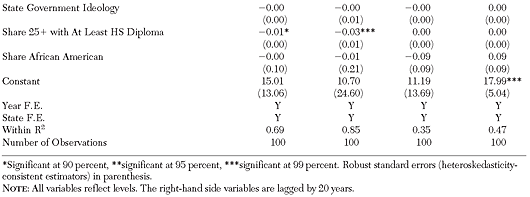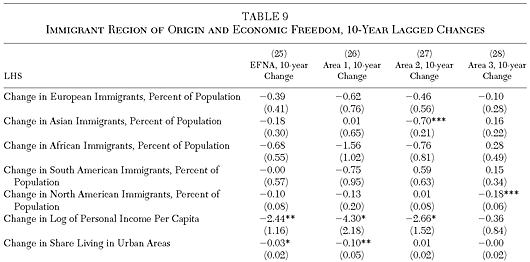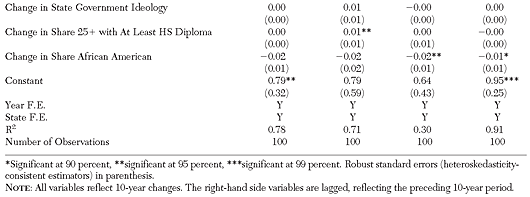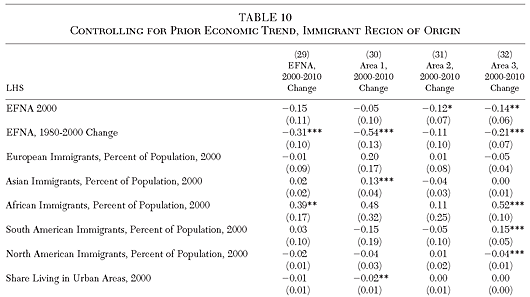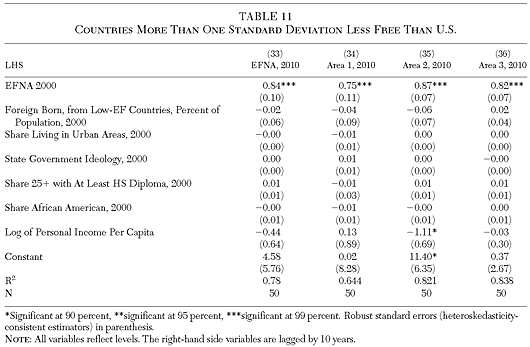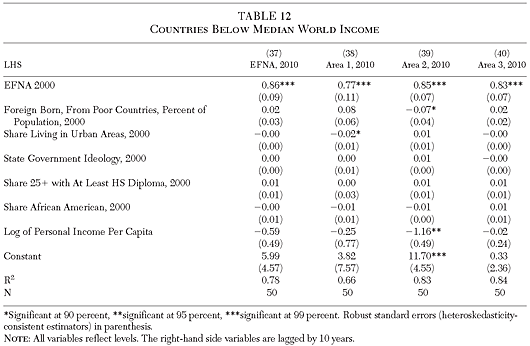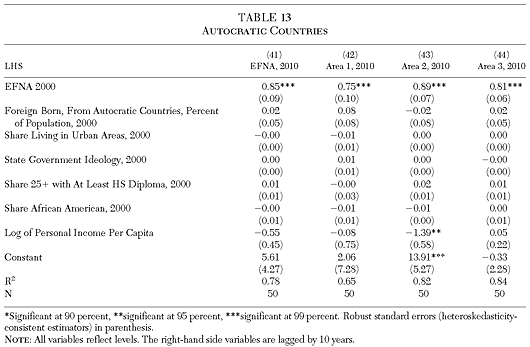The global efficiency gains literature argues that the current level of international immigration is suboptimal due to various immigration prohibitions, and that immigrants’ lives and broader macroeconomic environments would both be improved were these restrictions liberalized. Hamilton and Whalley (1984) argued that the reallocation of labor due to the removal of worldwide immigration restrictions could lead to as much as a 14.3 percent increase in world GDP. Since that time, numerous others have examined the quantitative welfare impacts of immigration. Docquier, Machado, and Sekkat (2015) have estimates that fall on the low end of the welfare gains spectrum, with efficiency gains of 7 to 18 percent of world GDP in the medium term, with a focal point around 12 percent. As Clemens (2011) details, the average estimates of welfare gains in the existing literature fall somewhere in the 50 to 150 percent of world GDP range. Though the precise estimates are fairly sensitive to particular modelling assumptions, even the more conservative models suggest staggeringly large efficiency gains as a result of the relaxation of mobility restrictions.
Still, there may be real reasons to be concerned about massive increases in international immigration. Clemens and Pritchett (2019) support a relaxation of current stringent immigration restrictions, but suggest that immigrants from poor countries might bring their low productivity with them to richer countries, thereby offsetting the substantial global efficiency gains found in Clemens (2011). They argue that there might therefore be a case for restricting this type of immigration, but clarify that current comprehensive restrictions are still inefficient. Though Collier (2013) does not run any empirical tests of his thesis, he posits that both migrants’ origin and destination countries may be adversely impacted by their decision to move. He suggests that the increased diversity in the host country as a result of immigration might lower the existing level of social cohesion and mutual trust in that society.
Borjas (2015) takes Collier’s argument a step further, and creates a model of the impacts of migration which incorporates these types of sociocultural externalities. In some simulations, the net gain to world GDP actually turns negative if enough people immigrate. According to Borjas (2015: 968), “For immigration to generate substantial global gains, it must be the case that billions of immigrants can move to the industrialized economies without importing the ‘bad’ organizations, social models, and culture that led to poor economic conditions in the source countries in the first place.”
However, Borjas’ argument hinges on the idea that immigrants will, in fact, bring these poor institutions with them. In many countries from which immigrants flee, those poor institutions were imposed by totalitarian dictators rather than chosen by the residents of those countries. So, it does not necessarily follow that immigrants would support implementing them in their new host countries. Indeed, the opposite seems more likely: that immigrants may self-select countries with better institutions than those in their home countries. Still, since Borjas provides no empirical evidence of this dynamic, we use this paper to provide a limited test of his thesis.
